By William E. Welsh
It became glaringly apparent to the German Wehrmacht in 1943 that it needed a solution to the threat of heavily armored British and Russian tanks whose armor proved too thick for German towed anti-tank guns. The Wehrmacht needed lethal self-propelled tank destroyers. As an interim solution while more sophisticated designs were contemplated, the German war machine fielded open-turreted panzerjagers equipped with powerful guns on obsolete and captured tank chasis. The first generation of these panzerjagers consisted of the Jagdpanzer I and the Marder series.
The Germans hurriedly rushed these interim designs into production. The resulting tank destroyers were ungainly and top-heavy, and their high silhouette enabled enemy tanks and artillery to easily target them in combat. On some occasions, enemy guns knocked them out before they could get into action. If an enemy shell exploded near one of these, its shrapnel could penetrate their thin armor.
Other efforts proved more successful. For example, improvements made in 1942 to the Sturmgeschutz III assault gun, which was designed to support infantry, enabled it to function well as a tank destroyer. The Ausf. F StugIII boasted the L43 75mm gun while the Ausf. F/8 and Ausf. G. boasted the longer L48 75mm gun. The StugIII fired armor-piercing shells capable of penetrating any Russian tank at the time. What is more, their low superstructure made it a difficult target for enemy armor and artillery.
Generaloberst Heinz Guderian, one of the pioneers of the blitzkrieg tactics the Germans used so effectively in France, Russia, and other theaters, strongly advocated the use of tank destroyers to offset the Allies’ enormous number of tanks. Guderian had been dismissed from his post as commander of the Second Panzer Army on December 25, 1942, on the grounds that he failed to hold his forward position at Tula 110 miles south of Moscow during Operation Typhoon. After his dismissal, he searched for a new job in the Wehrmacht.
By late 1942 Germany’s Heeres Waffenamt, or Army Ordnance Department, had become so dysfunctional when it came to producing the third generation of German tanks and purpose-driven tank destroyers that new leadership was required to reverse its downward spiral. Guderian was just the man for the job.
Hitler appointed Generaloberst Heinz Guderian on March 1, 1943, to the newly established position of Inspector General of the Panzer Troops. In this capacity Guderian would be responsible for overseeing the training and improvement of German panzer forces. He quickly established a good working relationship with Reich Minister of Armaments and War Production Albert Speer.
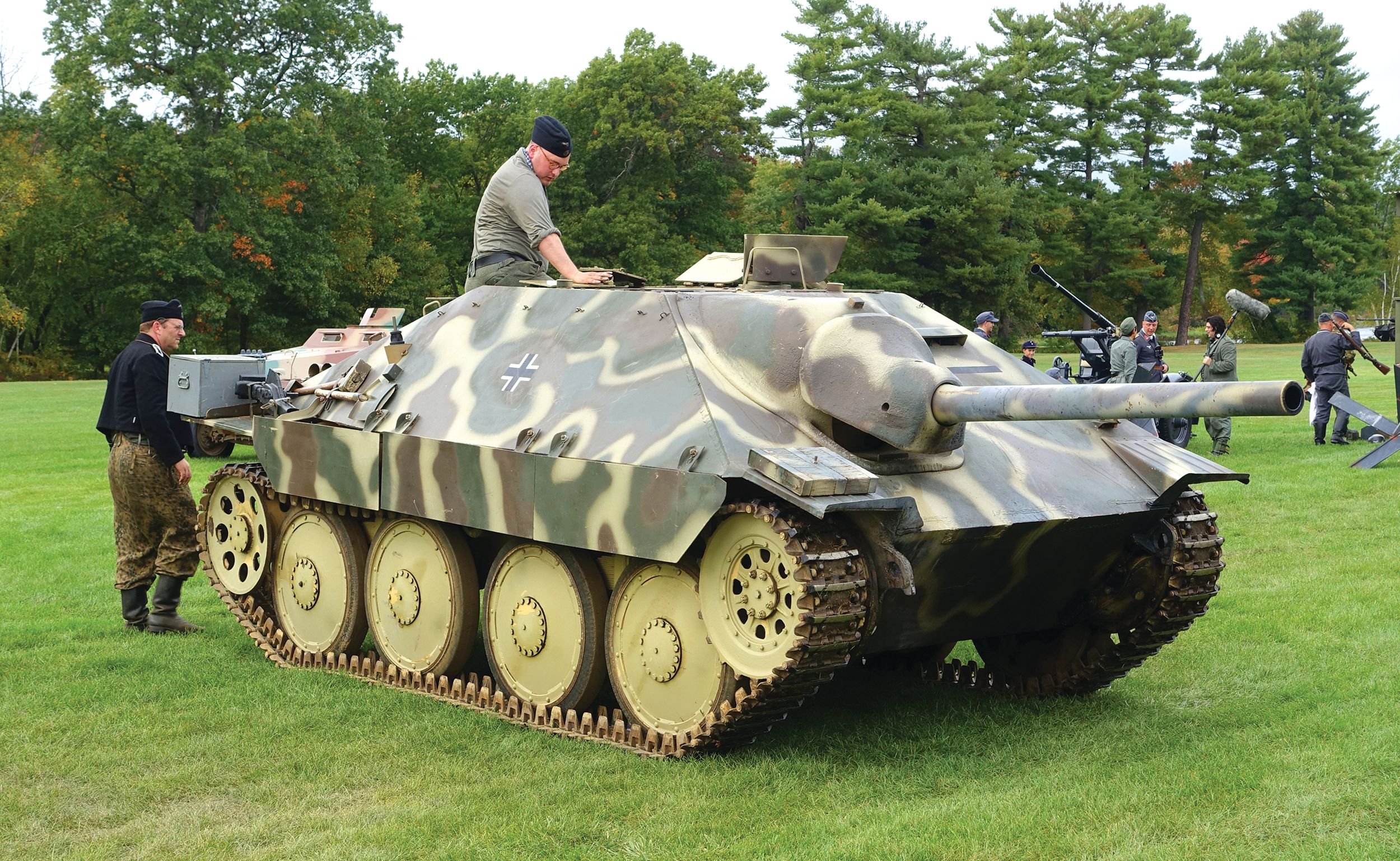
Guderian attempted to take control of planning and production of the Wehrmacht’s Sturmgeschutz assault guns, but he failed in this effort. This was because the General der Artillerie controlled production of the assault gun designated primarily for infantry support. Guderian cast about for other ways to field purpose-built tank destroyers.
An unforseen development led to Guderian getting the new tank destroyer he so desparately wanted. On November 26, 1943, the Royal Air Force dispatched 450 bombers against Berlin. They dropped 1,400 tons of high-explosive and incendiary bombs inflicting a staggering amount of damage on the industrial suburb of Reinickendorf. The Alkett factory where highly trained workers assembled the Sturmgeschutz suffered considerable damage, thereby ruling out that factory for production of a light tank destroyer similar to the Stug III, but controlled by the Inspector General of Panzer Troops.
The Oberkommando der Wehrmacht decided to switch production to the BMM factory in Prague, Czechoslovakia. When the staff of the high command learned, though, that it did not have the lifting capacity to produce the 24-ton Sturmgeschutz, Hitler and his ministers decided to embark on a plan to produce a light panzerjager. This project became known as the “light panzerjager auf 38(t).”
Guderian won the struggle with the Wehrmacht’s General der Artillerie for control of the new fighting vehicle by designating it as a tank destroyer rather than an assault gun. The official name of the vehicle eventually became the Jagdpanzer 38.
The initial concept submitted on December 17, 1943, was for a 13-ton, low-silhouette vehicle mounting a 75mm Pak 39 with a top speed of 35 miles per hour. Although only the front of the vehicle would have substantial armor protection, all four sides would be angled inward to deflect enemy shells. Since all of the components already had been tested and proven on the battlefield, there was no need for a prototype.
The Jagdpanzer 38 used the same engine, suspension, and running gear as that made for the Czech-made Panzer 38(t) light tank. As for the main gun, it was the same as the one used on the Jagdpanzer IV built on the Panzer IV chasis. The Jagdpanzer IV was a turretless tank destroyer that went into production in December 1943. Guderian vehemently opposed the Jagdpanzer IV because it used the Panzer IV chasis needed for continued tank production.
It is not known exactly how the nickname “Hetzer,” meaning baiter or agitator, became associated with the Jagdpanzer 38. An Ulm-based firm had used the name Hetzer for an alternate design it introduced for a light tank destroyer as part of the Third Reich’s Entwicklung initiative, which called for a standardized series of tank designs. The nickname made its way to the panzer troops, and they began using it for the Jagdpanzer 38. This is evident from strength reports filed by the Wehrmacht units equipped with the vehicle, which they referred to in their reports as the Hetzer.
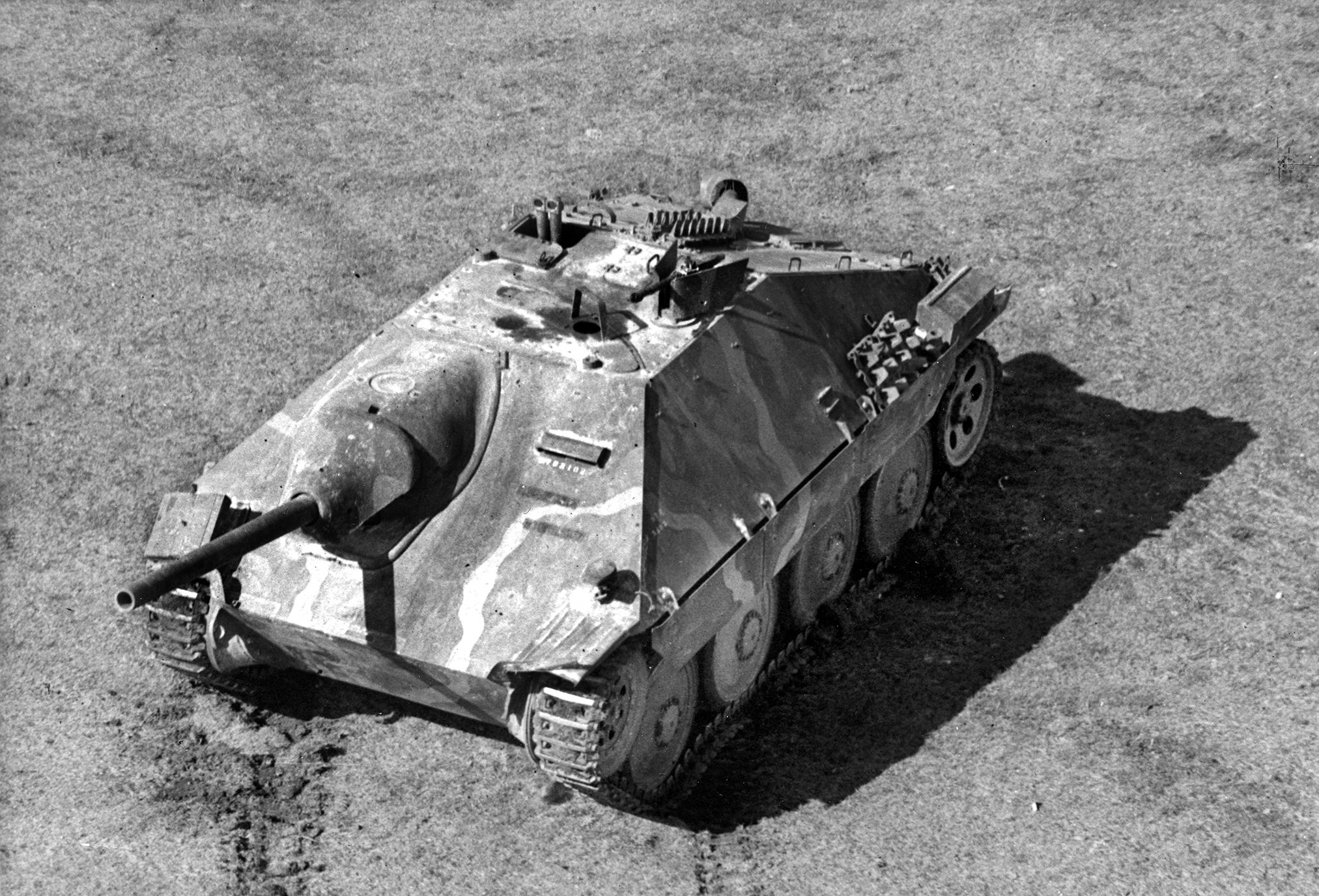
Hitler decided to make the production of the Panzer 38(t) panzerjager a top priority for mid-to-late 1944. An inspector with the Heeres Waffenamt signed off on the first three vehicles in early April. Those involved in mapping out the production of the vehicle intended to begin by producing 20 the first month in April 1944 and increase production to 50 in May. The BMM plant would then increase production steadily with a goal of producing 1,000 per month by March 1945. These were extremely ambitious production plans given that the BMM plant had never produced more than 150 armored vehicles in one month. But BMM would not have to do it alone for the German high command issued orders in summer 1944 for the Skoda plant in Pilsen, Czechoslovakia, to begin producing it as well.
In all respects the Jagdpanther 38 was a compact tank destroyer that presented a very small target to the enemy. In addition to its powerful main gun, it also had a roof-mounted, remote-controlled Rundumfeuer machine gun offered protection against enemy infantry. In addition, there was a port for a submachine gun to the right of the driver’s visor.
The commander had a forward-facing SF 14Z scissors periscope, as well as a rear-facing periscope. The driver had twin periscopes, the gunner had a periscopic sight for the main gun, and the loader had a fixed periscope. There also was a periscopic sight for the remote-controlled machine gun.
The vehicle was 20 feet long, 8 feet wide, and 6 feet and 10 inches tall. The 60mm frontal armor sloped 60 degrees, while the lower frontal armor sloped at a 40-degree angle. The side armor, however, only furnished protection against machine gun and small arms fire.
The speed originally intended proved unobtainable. The same held true for the weight, which turned out to be 16 tons. The final version had a maximum speed of 25 miles per hour and an operational range of 110 miles. The Hetzer carried 41 rounds of ammunition for the main gun, one-third of which was armor-piercing shells and the other two-thirds high-explosive shells.
Unlike most German tanks and tank destroyers, the Jagdpanzer 38’s main gun was positioned on the right side of the fighting compartment. This meant that the gun could only traverse 11 degrees to the right and five to the left. On the left side of the fighting compartment sat the driver in the front, the gunner in the middle, and the loader/radio operator in the rear. The commander sat at the right rear behind the gun.
The interior layout, which resulted in cramped quarters for the crew, had several significant drawbacks. The driver had difficulty exiting the vehicle in an emergency, the loader had trouble accessing the ammunition racks and loading the gun from their right side, and the crew could not see what was happening to the right of the vehicle when the hatches were closed.
Like other panzerjagers, the Hetzer performed best on the defensive lying in wait on the flanks of advancing enemy armored formations. This typically meant scouting before a battle to find strong protected positions behind terrain or man-made features, including rivers, marshes, and minefields. In defending infantry to which they were attached, they augmented the fire of fixed anti-tank guns.
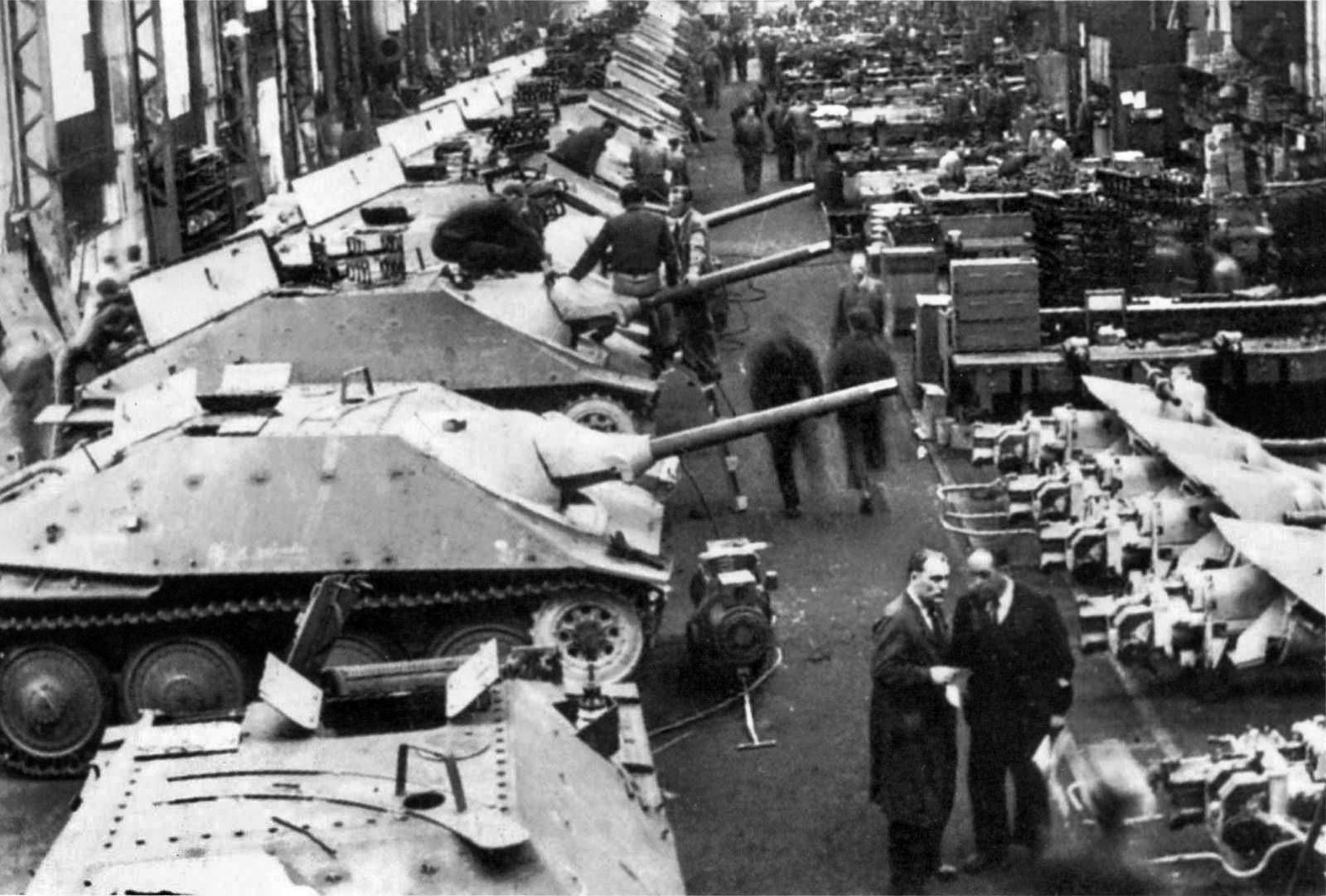
A bulletin of the German panzer troops published in October 1944 contained glowing accounts of the performance of the Hetzers in battle. Crews praised its effective weapons, well-sloped armor, and low silhouette. These attributes made it “fully adaptable to both its main role in combating enemy tanks and in supporting infantry in both attack and defense,” stated one report. Jagdpanzer 38 companies compiled impressive battle statistics at little or no cost in their own strength. “In a short period, one company destroyed 20 tanks without a single loss,” stated another report.
Yet another report described the advantages the crews of the Jagdpanzer 38 could reap from its low silhouette and off-road maneuverability. “In combat against enemy tanks, the low profile allowed the [Hetzer] to quickly open heavy fire in direct sight of the enemy and also to quickly change positions and ambush the enemy with concentrated fire from effective ranges.”
During its service in the final 10 months of World War II, the crews of Jagdpanzer 38 found that they could knock out nearly all types of enemy tanks they encountered while presenting a target so extremely difficult to spot as to be nearly invisible on the battlefield. The commanders of German front-line units were so pleased with the performance of the Jagdpanzer 38 that they saturated headquarters with requests for additional Hetzers. In response, the German high command in late 1944 designated that all Panzer 38(t) production was to be redirected towards the Hetzer.
The Wehrmacht distributed the first Hetzers produced in spring 1944 to the Ordnance Department for test firing and automotive trials, and also to training divisions. The first delivery to a front-line unit occurred in July 1944 when both Heeres Panzer Jager Abteilung 731 of Army Group North on the Eastern Front and Heeres Panzer Jager Abteilung 733 of Army Group Center both received an initial shipment of 45 Hetzers.
These panzerjager battalions in turn established three companies each with 14 Hetzers. Three other independent Heeres Panzer Jager Abteilungs—561st, 741st, and 744th—also eventually received Hetzers. The majority of the Hetzers went into action on the Eastern Front, although some were shipped to the Western Front and Italy. For example, two companies of the 741st were shipped by rail to the Arnhem sector in September 1944.
German regular infantry, panzergrenadier, and Volksgrenadier formations all eventually received Hetzers. The Hetzers assigned to Wehrmacht infantry divisions supported infantry attacks and helped contain penetrations of their forward lines by enemy armor.
For the Ardennes offensive that began in mid-December 1944, the Germans massed 295 Hetzers in 21 panzerjager companies. In January 1945, the German high command established Panzer Jager Brigade 104 that consisted of a mix of Hetzers and halftracks. The brigade, which also had reconnaissance vehicles, was tasked with seeking and destroying Russian armored units on the Eastern Front.
The last surviving strength report produced by the Germans dated April 10, 1945, reported 489 operational Hetzers on the Eastern Front, 79 operational on the Western Front, and 64 operational in Italy. By the end of the war, Germany had produced a total of 1,577 Hetzers. With its superb attributes as a tank destroyer, it remains one of the most renowned and unique German fighting vehicles of the late war period.
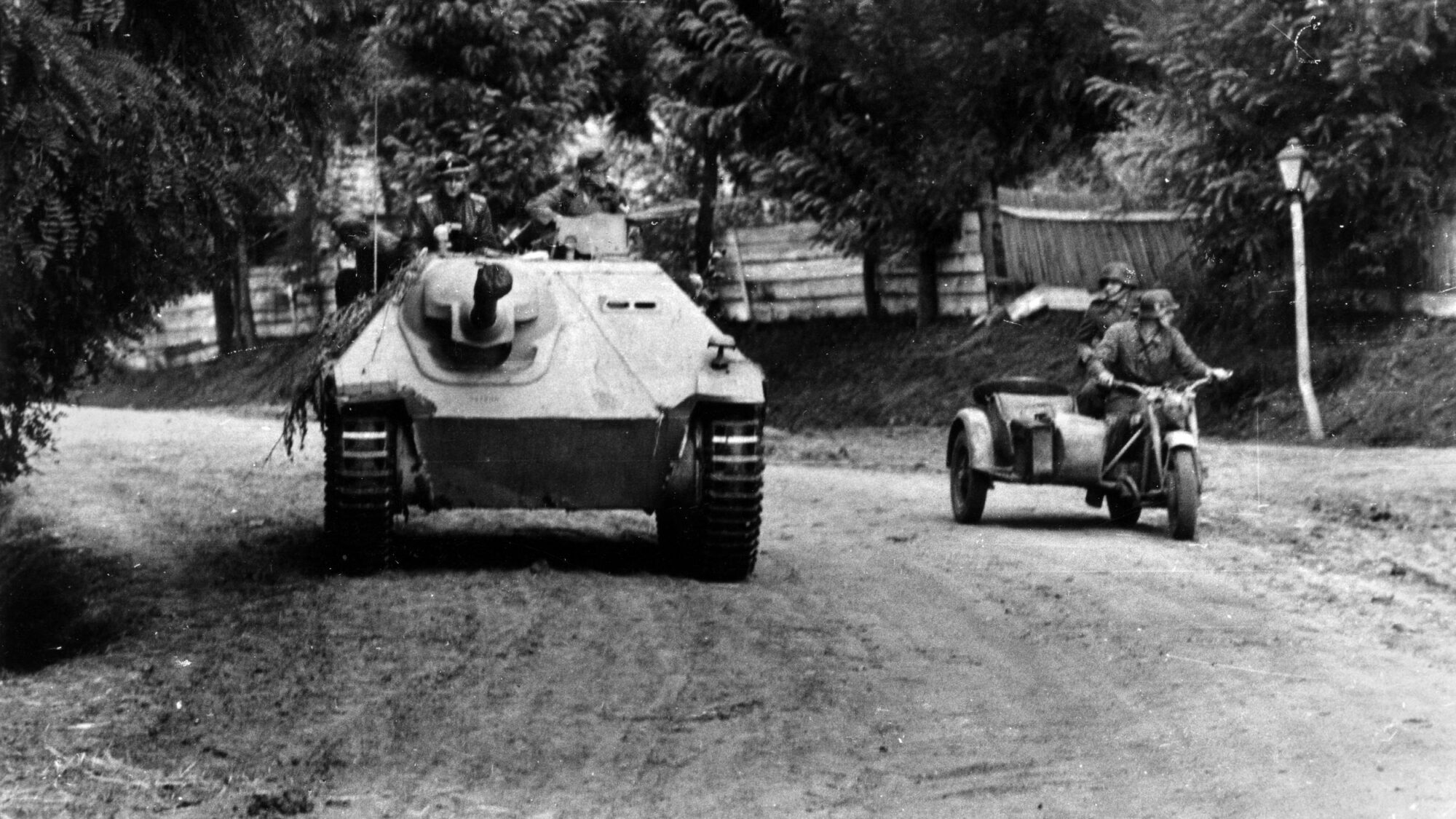
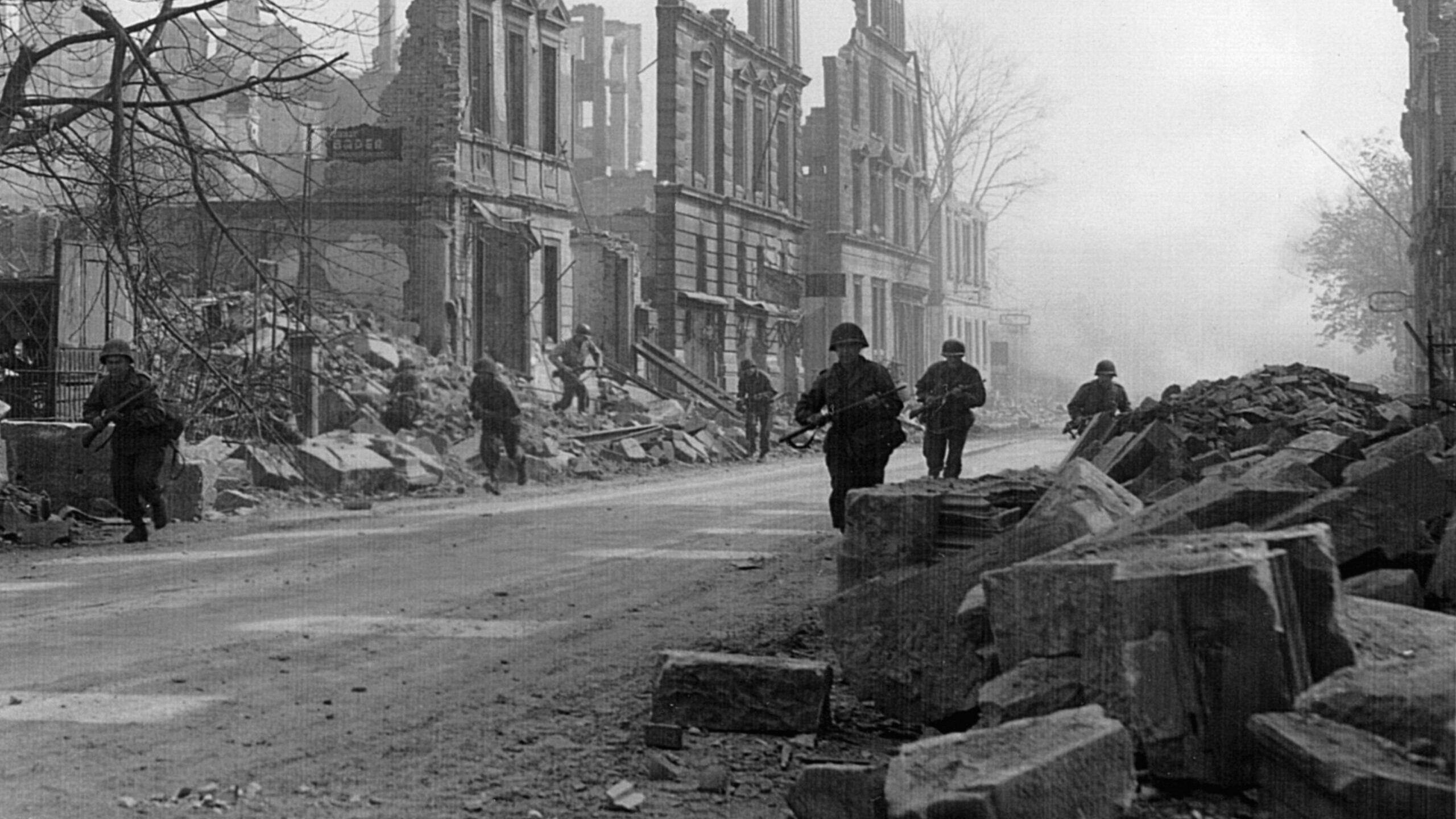
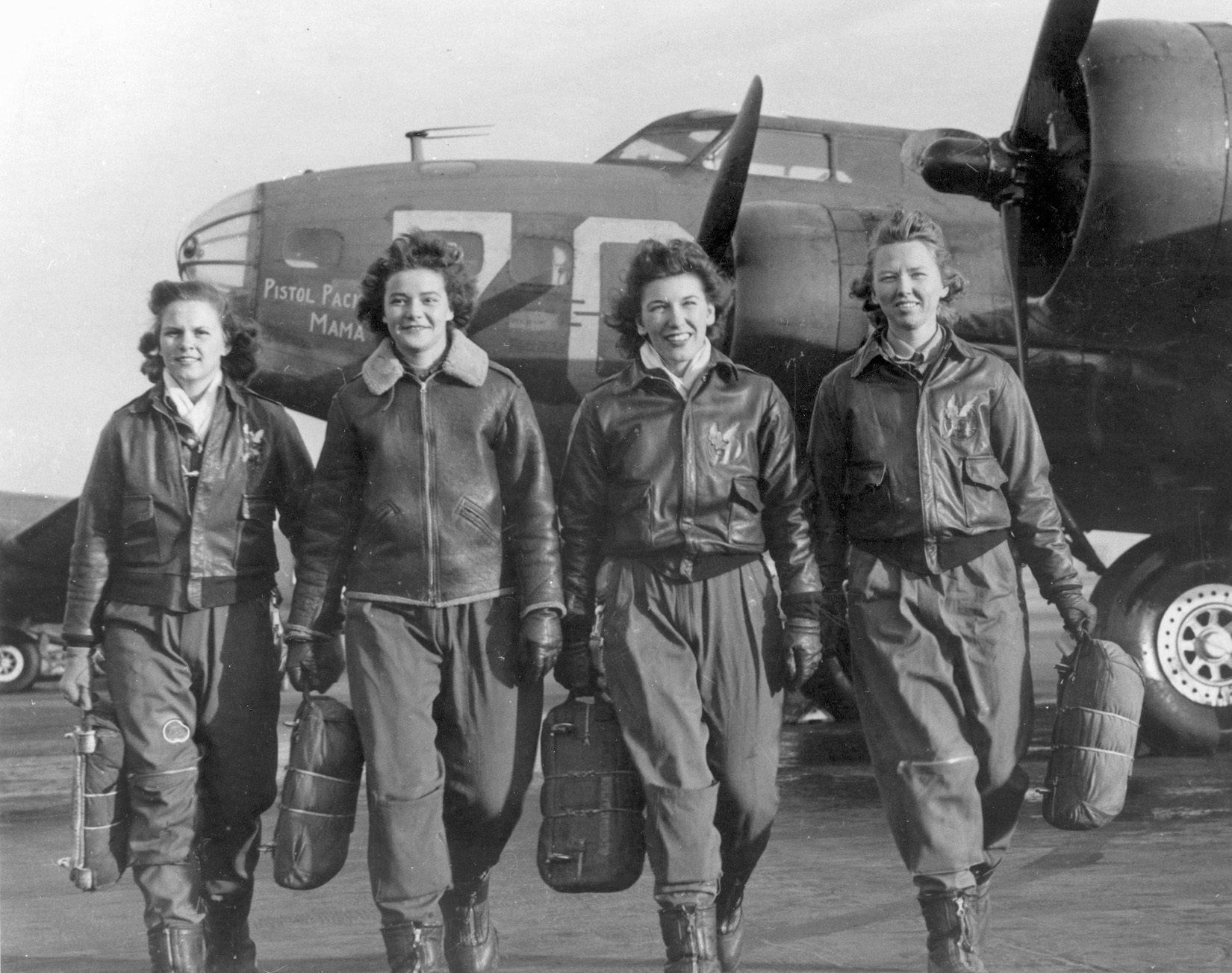
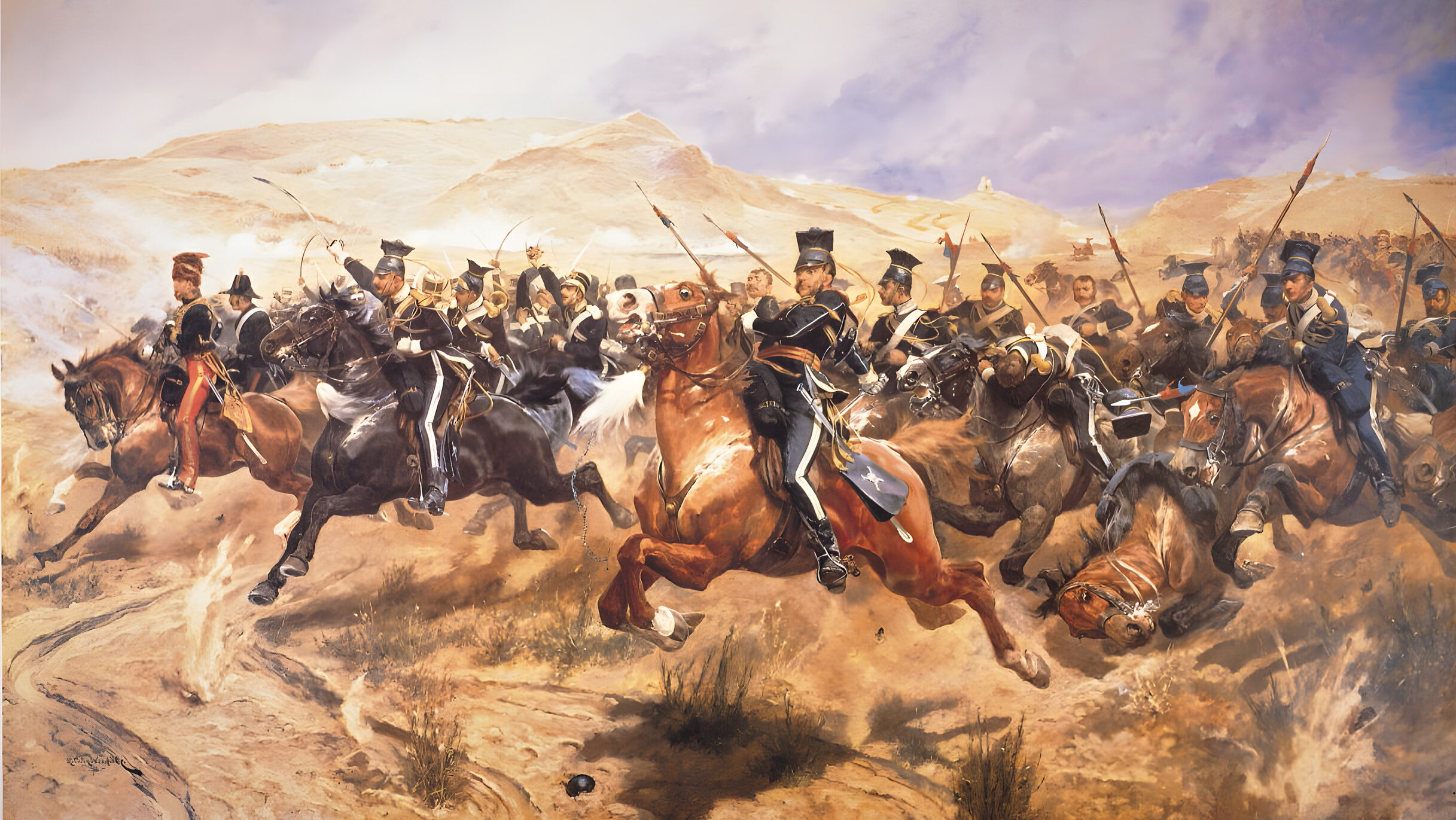
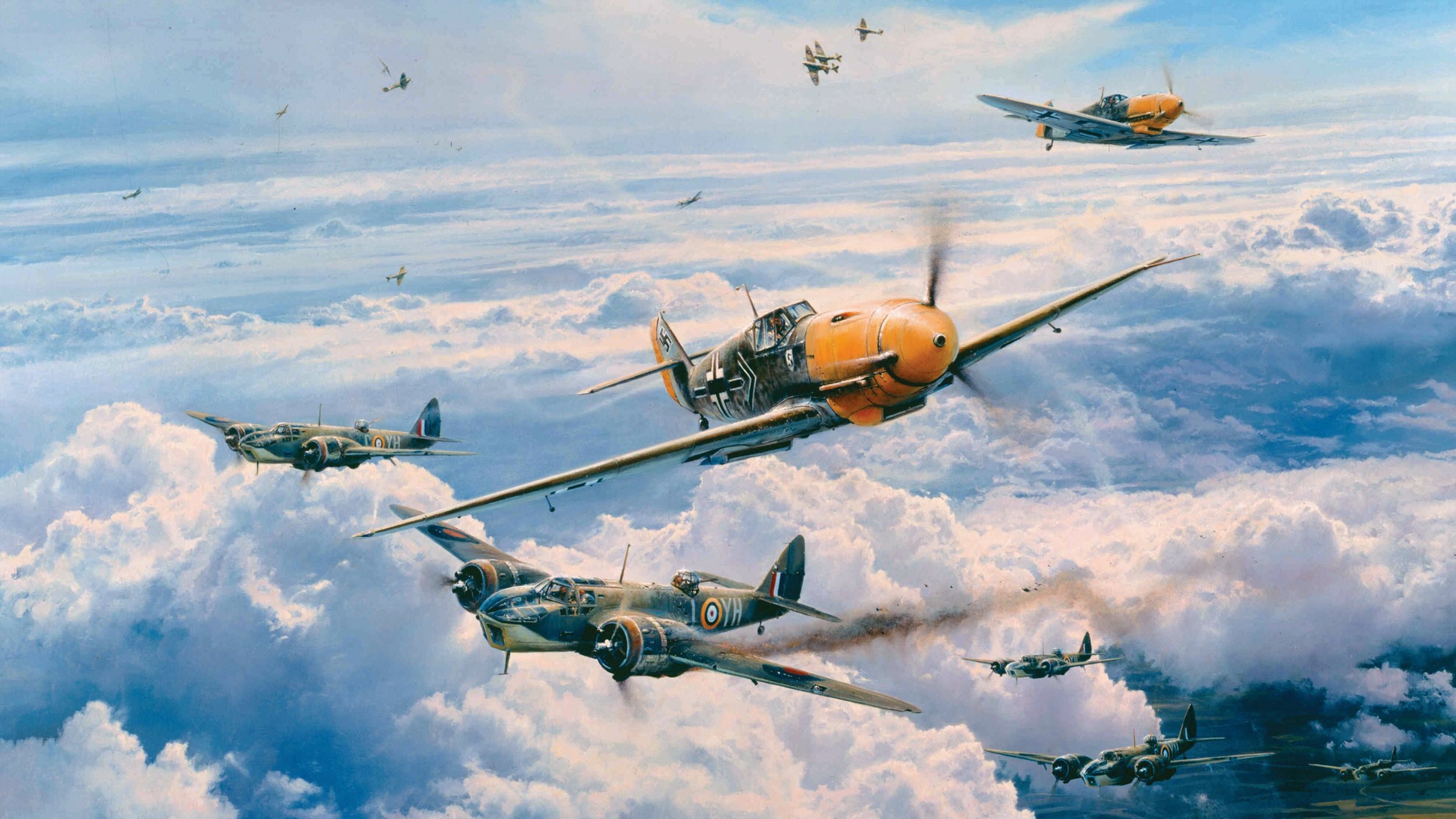
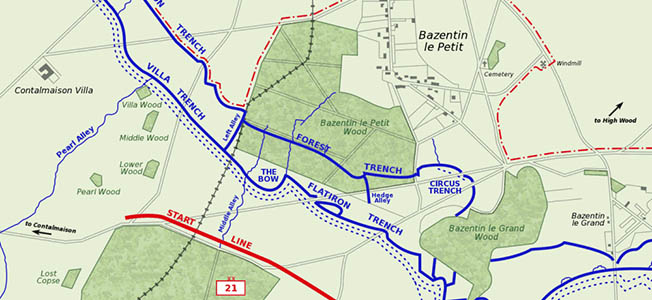
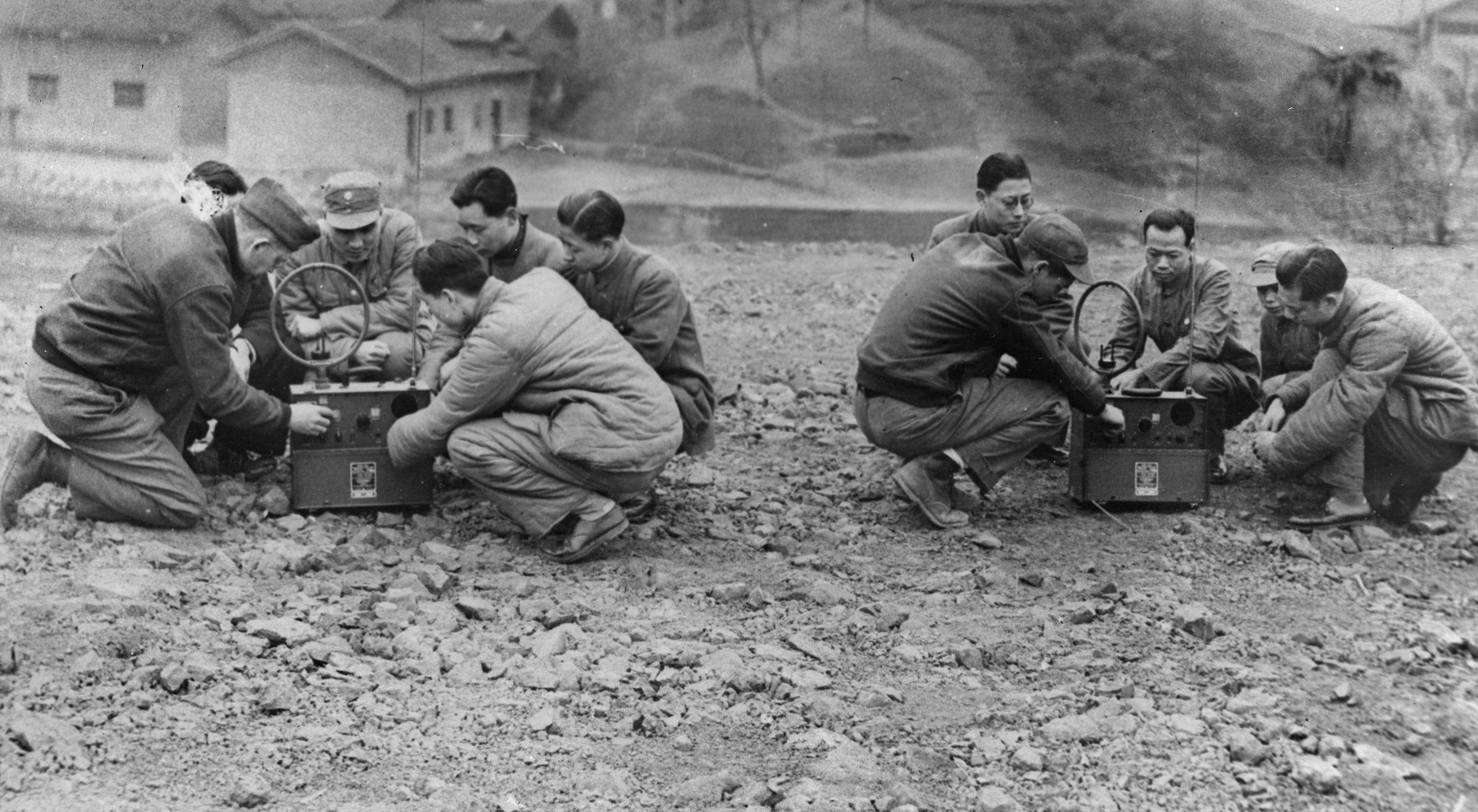
Join The Conversation
Comments
View All Comments